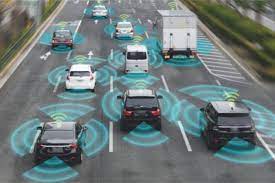Self-driving cars, also known as autonomous vehicles, represent a revolutionary advancement in transportation technology. These vehicles utilize a combination of sensors, cameras, and artificial intelligence algorithms to navigate roads and transport passengers safely. The concept of self-driving cars has been a subject of fascination and speculation for decades, but recent advancements have brought this futuristic vision closer to reality.
Introduction to Self-Driving Cars
Self-driving cars are vehicles capable of navigating and operating without human intervention. The technology behind these vehicles allows them to perceive their environment, make decisions, and execute maneuvers, all without human input. The development of self-driving cars stems from the desire to enhance road safety, improve transportation efficiency, and reduce the environmental impact of traditional automobiles.
Advantages of Self-Driving Cars
Increased Safety
One of the primary benefits of self-driving cars is the potential to significantly reduce the number of accidents on the road. Unlike human drivers, autonomous vehicles are not prone to distractions, fatigue, or human error. They can react faster to changing road conditions and potential hazards, making roads safer for both passengers and pedestrians.
Enhanced Convenience and Efficiency
Self-driving cars have the potential to revolutionize the way people commute and travel. With autonomous vehicles, passengers can reclaim the time spent behind the wheel and use it for more productive or leisure activities. Additionally, self-driving cars can optimize routes, reduce traffic congestion, and improve overall transportation efficiency.
Environmental Benefits
The widespread adoption of self-driving cars could have positive implications for the environment. Autonomous vehicles are typically electric or hybrid, leading to reduced greenhouse gas emissions and decreased reliance on fossil fuels. Furthermore, the implementation of self-driving car fleets could facilitate car-sharing and reduce the need for individual car ownership, further reducing environmental impact.
Challenges and Concerns
While self-driving cars hold immense promise, they also face significant challenges and concerns that need to be addressed.
Technological Limitations
The technology powering self-driving cars is still in its infancy, and there are limitations to what autonomous vehicles can currently achieve. Challenges such as inclement weather, complex urban environments, and unpredictable human behavior present obstacles that developers must overcome.
Ethical and Legal Considerations
The deployment of self-driving cars raises complex ethical and legal questions regarding liability, accountability, and decision-making algorithms. For example, in the event of an unavoidable accident, how should an autonomous vehicle prioritize the safety of passengers versus other road users?
Economic Implications
The widespread adoption of self-driving cars could have far-reaching economic implications. Industries reliant on human drivers, such as transportation and logistics, may undergo significant disruption. Additionally, there may be job displacement for workers in sectors such as driving and automotive manufacturing.
Current State of Self-Driving Technology
Despite the challenges, significant progress has been made in the development of self-driving technology.
Major Players and Their Advancements
Companies like Tesla, Waymo, and Uber are at the forefront of self-driving car development, investing heavily in research and testing. These companies have made substantial advancements in autonomous vehicle technology, with some already offering limited self-driving capabilities to consumers.
Real-World Applications and Testing
Self-driving cars are being tested in various real-world environments, including cities, highways, and specialized test tracks. These tests help developers refine the technology, gather data on performance and safety, and identify areas for improvement.
Future Prospects
The future of transportation is closely intertwined with the evolution of self-driving cars.
Integration with Smart Cities
Self-driving cars are expected to play a crucial role in the development of smart cities. These vehicles can communicate with infrastructure and other vehicles, optimizing traffic flow, reducing congestion, and enhancing overall urban mobility.
Impact on Urban Planning and Infrastructure
The widespread adoption of self-driving cars will necessitate changes in urban planning and infrastructure. Cities may need to redesign roads, parking facilities, and public transportation systems to accommodate autonomous vehicles effectively.
Social Implications and Cultural Shifts
The proliferation of self-driving cars will have profound social implications, altering the way people perceive and interact with transportation. Concepts such as car ownership, commuting patterns, and urban sprawl may undergo significant transformations, leading to cultural shifts in society.
Conclusion
Self-driving cars represent a transformative leap forward in transportation technology, offering numerous benefits in terms of safety, efficiency, and environmental sustainability. While there are challenges and concerns that need to be addressed, the future prospects of autonomous vehicles are promising. As the technology continues to evolve and mature, self-driving cars are poised to revolutionize the way we move and live in the years to come.
FAQs
How do self-driving cars work?
- Self-driving cars utilize a combination of sensors, cameras, and artificial intelligence algorithms to perceive their environment, make decisions, and navigate roads safely.
Are self-driving cars safe?
- While self-driving cars have the potential to improve road safety, there are still concerns regarding their reliability and performance, particularly in complex driving scenarios.
Will self-driving cars replace human drivers completely?
- It’s unlikely that self-driving cars will completely replace human drivers in the near future. However, they may gradually become more prevalent, especially in certain applications such as ride-sharing and freight transportation.
What are the main challenges in the development of self-driving cars?
- Some of the main challenges in the development of self-driving cars include technological limitations, ethical and legal considerations, and economic implications.
How soon can we expect self-driving cars to become mainstream?
- The timeline for the widespread adoption of self-driving cars depends on various factors, including technological advancements, regulatory frameworks, and consumer acceptance. While some self-driving features are already available in certain vehicles, fully autonomous cars may still be several years away from mainstream adoption.





